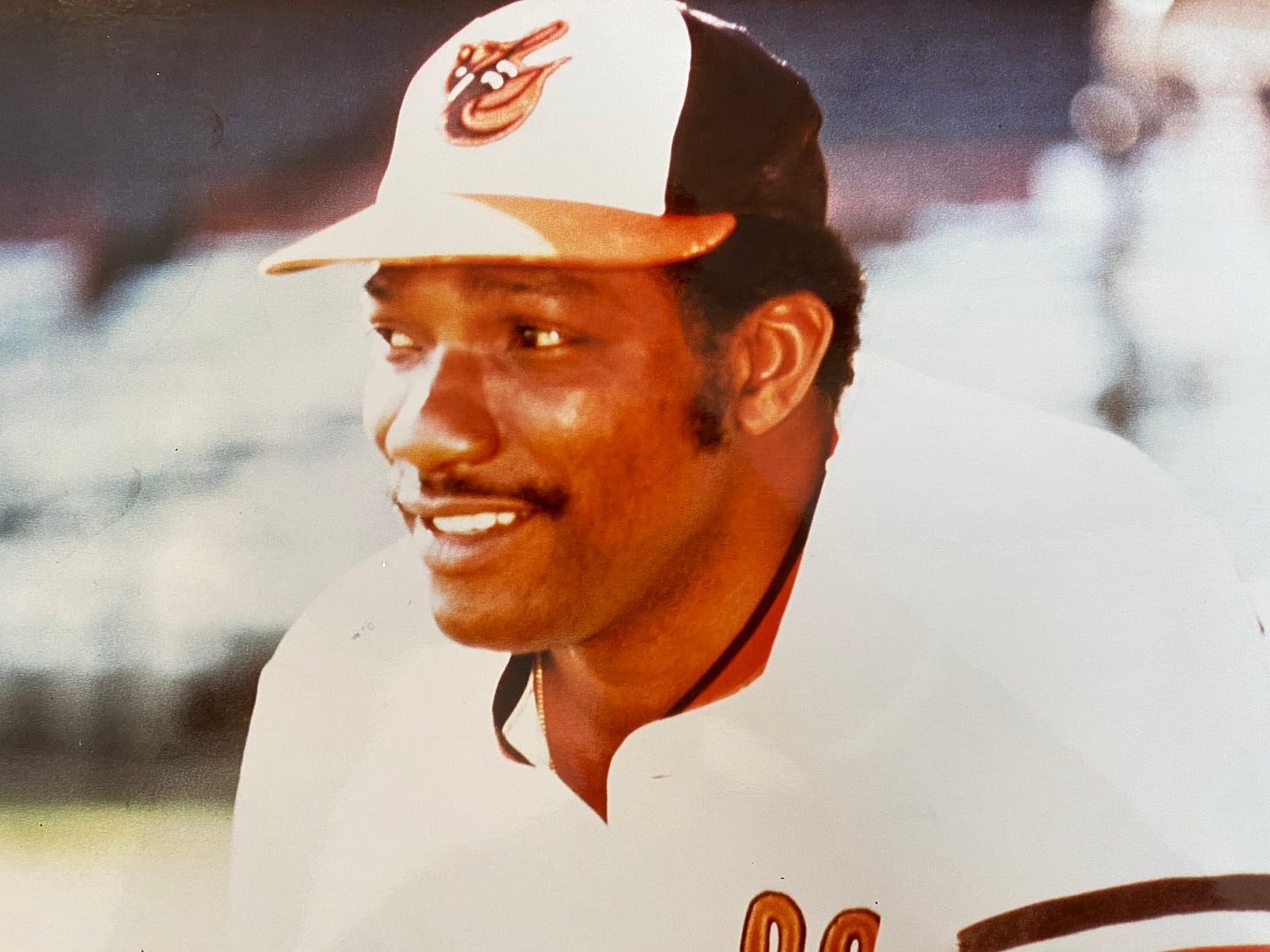The Bird Tapes Interview: Elrod Hendricks (Part 2)
He was in the middle of a series of World Series controversies. Then he got hurt and was never the same. He explains it all in the second half of his vintage interview.
The Orioles played 17 World Series games from 1969 through 1971, when they ruled the American League. Elrod Hendricks was their catcher in 12 of those 17 games.
No number better reflects Hendricks’ surprising importance during the Orioles’ most successful era. Though he didn’t play in the major leagues until he joined the Orioles at age 27 in 1968, Hendricks quickly became a cornerstone on a dominant team.
In fact, he had a knack for winding up in the middle of the biggest controversies engineered during the Orioles’ back-to-back-to-back World Series appearances.
In the first half of my vintage interview with him, posted last week, he delved into the infamous play at the plate in Game 1 of the 1970 World Series. With the Orioles and Cincinnati Reds tied at 3-3 in the bottom of the sixth inning, the Reds’ Bernie Carbo dashed for home from third base when teammate Ty Cline chopped a ball into fair ground in front of the plate. Hendricks lunged for the ball, grabbed it and reached to tag Carbo with his mitt, which he did … with the ball still in his other hand. The umpire, Ken Burkhart, who’d wound up tangled between the players, didn’t have a clear view and incorrectly called Carbo out.
The call stood, and after the Orioles won the game, it was a nationwide talking point. Laughing about it with me years later, Hendricks said Burkhart later asked him if he’d found a way to profit off the controversy. (He didn’t.)
In the second part of his vintage interview, available below to paid subscribers, Hendricks reviews other Fall Classic controversies he was involved in — ones that didn’t work to the Orioles’ benefit.
With the New York Mets and Orioles tied in the bottom of the 10th inning of Game 4 in 1969, the Mets’ J.C. Martin laid down a sacrifice bunt. The Orioles’ pitcher, left-hander Pete Richert, called off Hendricks, fielded the bunt and threw to first, but the ball hit Martin, who was running inside the foul line, as replays showed. The ball bounced away and the Mets scored the winning run without interference being called.
“I was screaming at the umpire,” said Hendricks, who added that he wasn’t thrilled Richert called him off because he’d made such a play countless times.
In Game 7 of the 1971 World Series, with the Pittsburgh Pirates holding a 1-0 lead in the top of the eighth inning at Memorial Stadium. the Pirates’ Jose Pagan hit a ball into the left-center field gap. While the Orioles’ Merv Rettenmund ran the ball down, fielded it, bobbled it and threw for home, the Pirates’ Willie Stargell, who’d been on first base, circled the bases. As he neared home, where Hendricks waited, the relay throw came flying in, only to be cut off by Orioles first baseman Boog Powell. Stargell scored what ended up as the winning run, and Powell received criticism.
In our conversation years later, Hendricks said Powell made the right play because Stargell was going to score, anyway.
Hendricks fared well at the plate in the 1970 World Series against the Cincinnati Reds, hitting .364 with a home run. And in 1971, he was one of the few Orioles who solved Steve Blass, the right-hander who famously mystified the Orioles during the series, then later lost the ability to throw strikes. In Game 7, Hendricks had two hits off Blass in his first three at-bats and was in line to hit in the bottom of the ninth, with the Orioles down by a run, if a couple of the teammates hitting in front of him reached base.
After Blass retired the side in order, Hendricks wept in the clubhouse as the Pirates celebrated.
After that series, the Orioles took a long trip to Japan as ambassadors of American baseball, and Hendricks suffered an injury that impacted him for the rest of his career. As he explains in his interview, he wound up with chronic back pain and numbness down his right side that wasn't resolved until after his playing career ended.
Never again did he have a role so prominent. His performance declined and the Orioles traded him in 1972, and although he was back in 1973, the club had acquired his replacement, Earl Williams, a rising star, in a trade with the Atlanta Braves. Williams was supposed to help offset the power vacuum created by Frank Robinson’s departure, but he didn’t live up to expectations and was gone after two years.
Hendricks dives deep into it all in the conclusion to his Bird Tapes interview.
Keep reading with a 7-day free trial
Subscribe to The Bird Tapes to keep reading this post and get 7 days of free access to the full post archives.





